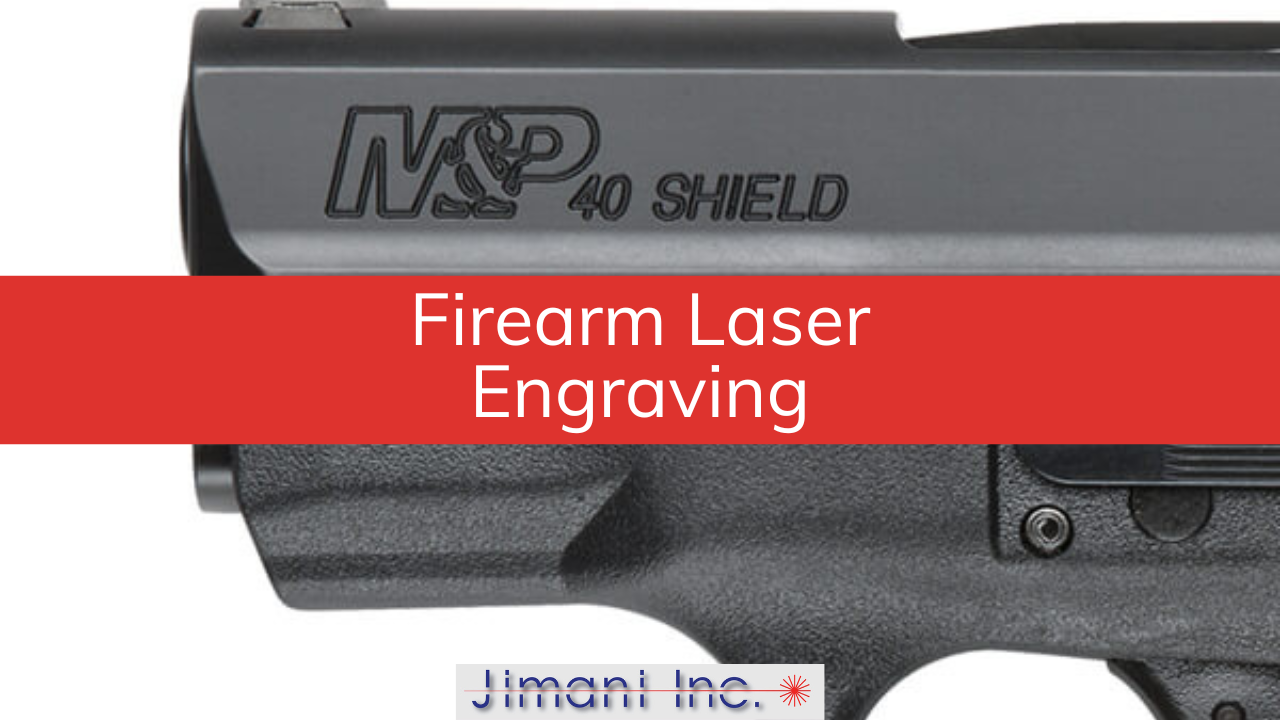Laser Marking Denim With a CO2 Laser
This was done at very low power with our 50 Watt Low Cost Hybrid CO2 laser marker. We used a 12...

Federal law drives most firearm engraving decisions. Under ATF regulations, every firearm manufactured in the United States must bear specific identifying information permanently marked on the frame or receiver.
This includes the manufacturer's name, city, and state of manufacture, model designation, caliber or gauge, and most critically, a unique serial number. The markings must be conspicuous, legible, and permanent – requirements that make laser engraving the preferred method for compliance.
Beyond regulatory compliance, laser engraving serves practical purposes throughout a firearm's lifecycle. Law enforcement agencies rely on these permanent marks for evidence tracking and case investigations.
When firearms are transferred through legal channels, clear identification prevents confusion and ensures proper documentation. Many manufacturers have discovered that laser marking also protects their brand reputation by making counterfeiting significantly more difficult.
The aesthetic appeal of laser engraving shouldn't be overlooked either. Premium firearm manufacturers often use laser systems to apply intricate logos, custom designs, or commemorative text that elevates their products above basic compliance marking.
The precision possible with fiber laser systems enables remarkably detailed work that traditional stamping or chemical etching cannot match.
Fiber laser systems excel at firearm marking because they handle the diverse materials common in modern firearms manufacturing. Whether working with stainless steel slides, aluminum frames, polymer components, or specialized coatings like Cerakote, the 1.06 micron wavelength of fiber lasers provides excellent absorption across these materials.
The marking process itself offers manufacturers significant advantages over traditional methods. Laser engraving eliminates the stress concentrations that can occur with impact stamping, particularly important for high-stress components like frames and receivers. The non-contact process means no tooling wear, no replacement punches, and consistent mark quality from the first part to the ten-thousandth.
Speed becomes crucial in high-volume production environments. A typical serial number and manufacturer marking on an aluminum frame takes roughly 3-5 seconds with a 20-watt fiber laser, while more complex 2D Data Matrix codes might require 8-12 seconds depending on size and depth requirements. Compare this to manual stamping operations that can take 30 seconds or more per part, and the productivity gains become substantial.
Several major manufacturers have proven the effectiveness of laser marking in their operations. One leading U.S. firearms manufacturer implemented Hybrid Fiber Laser Marking Systems specifically for marking 2D Data Matrix codes and serial numbers on law enforcement weapons. The success of their initial installation led to additional system purchases as they expanded laser marking throughout their production lines.
The versatility shows in applications beyond basic compliance marking. Another manufacturer uses a 20-watt system primarily for aesthetic white logo marking on dark substrates, demonstrating how the same technology serves both regulatory and branding needs.
The ability to switch between deep laser engraving for permanent identification and surface ablation for visual appeal makes laser systems particularly valuable in firearms manufacturing.
Processing different materials requires understanding the interaction between laser parameters and substrate characteristics. Hard anodized aluminum components, common in many modern firearms, present particular challenges that require higher power levels and multiple passes to achieve the desired mark quality.
Steel components typically require deeper engraving to meet permanency requirements, often necessitating multiple passes at reduced speeds to achieve proper depth without creating slag buildup.
The investment in laser marking technology pays dividends beyond immediate production needs. As regulations evolve and traceability requirements potentially expand, manufacturers with established laser marking capabilities can adapt more quickly than those relying on traditional marking methods.
The flexibility to modify mark content, adjust positioning, or accommodate new substrate materials without retooling provides a competitive advantage in a rapidly changing regulatory environment.
Jimani provides comprehensive training and ongoing technical support to ensure your firearm marking operations run smoothly.
Our application specialists have extensive experience with firearms marking requirements and can help optimize your processes.
Read more about Jimani's 20 Watt Hybrid Fiber Laser Marking Systems.
Please click here to read more laser marking guns and gun component stories.
This was done at very low power with our 50 Watt Low Cost Hybrid CO2 laser marker. We used a 12...
Industry: Ad Specialty
Material: Glass
Mark Data Type: Graphics, logo
Laser Mark Type: Surface...
Check out this great new page on the Jimani site where we go in to depth on how we set up and...